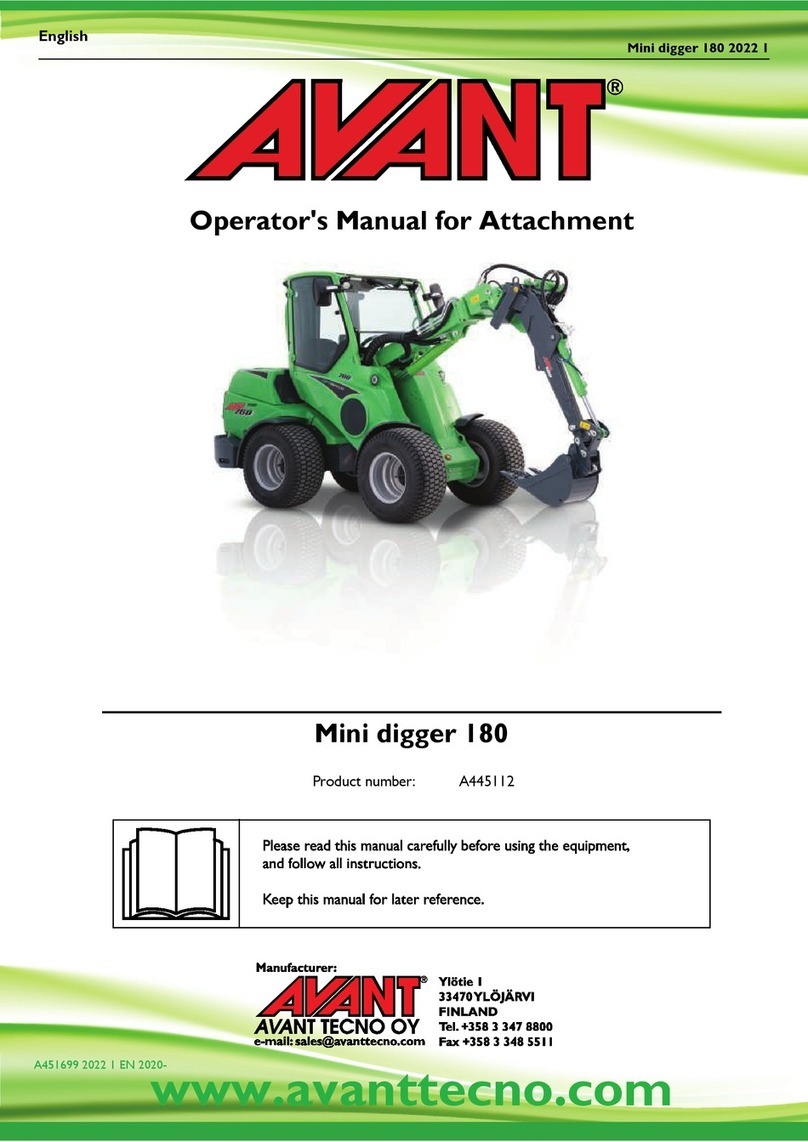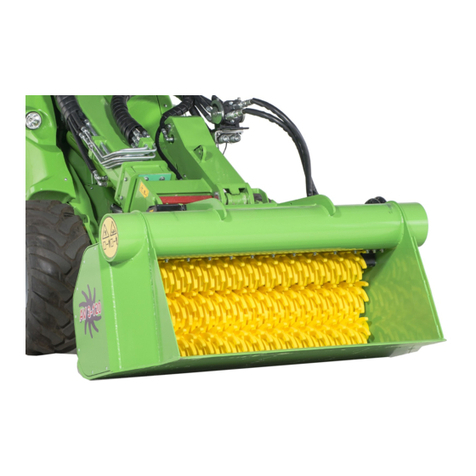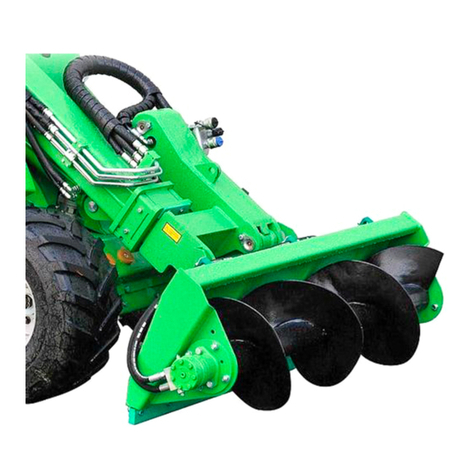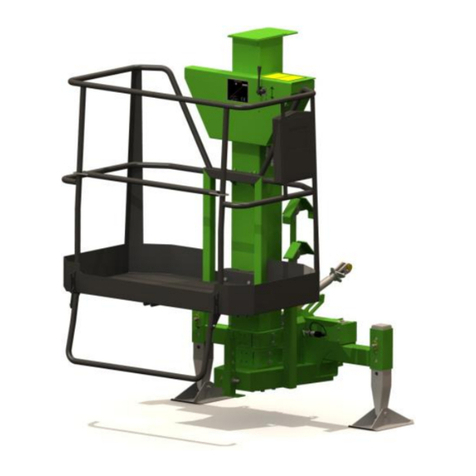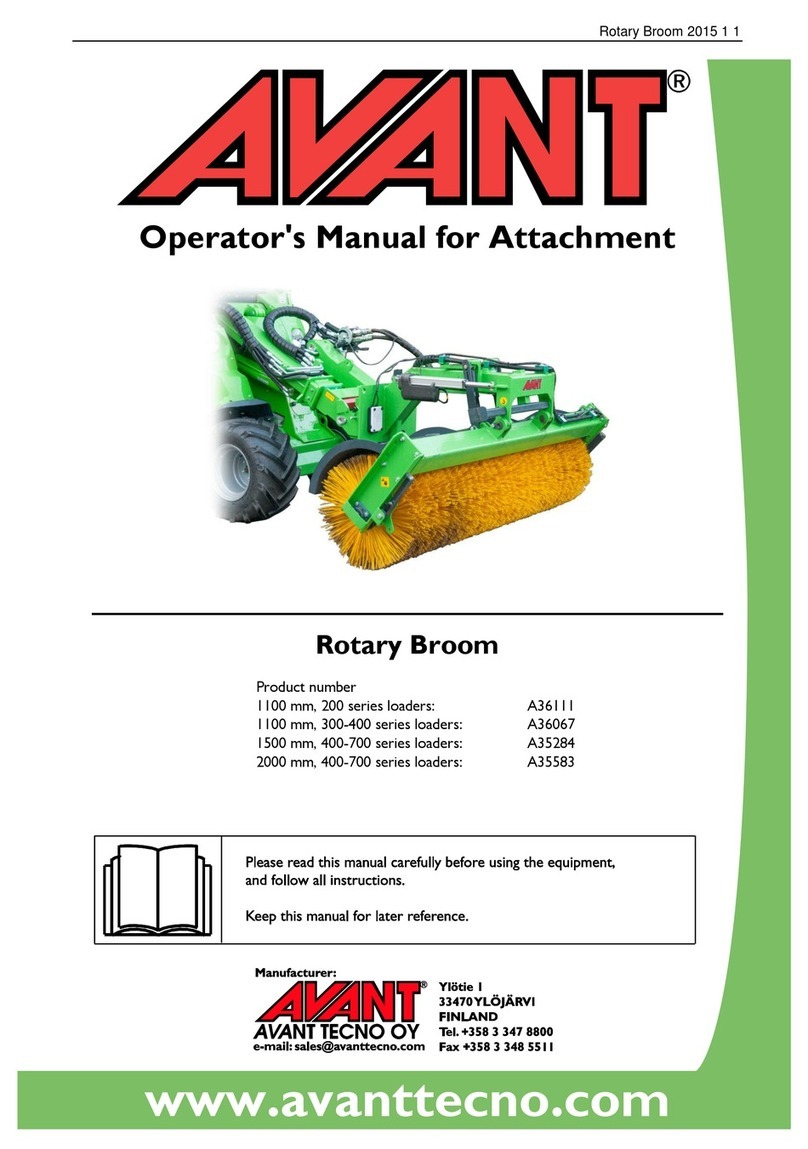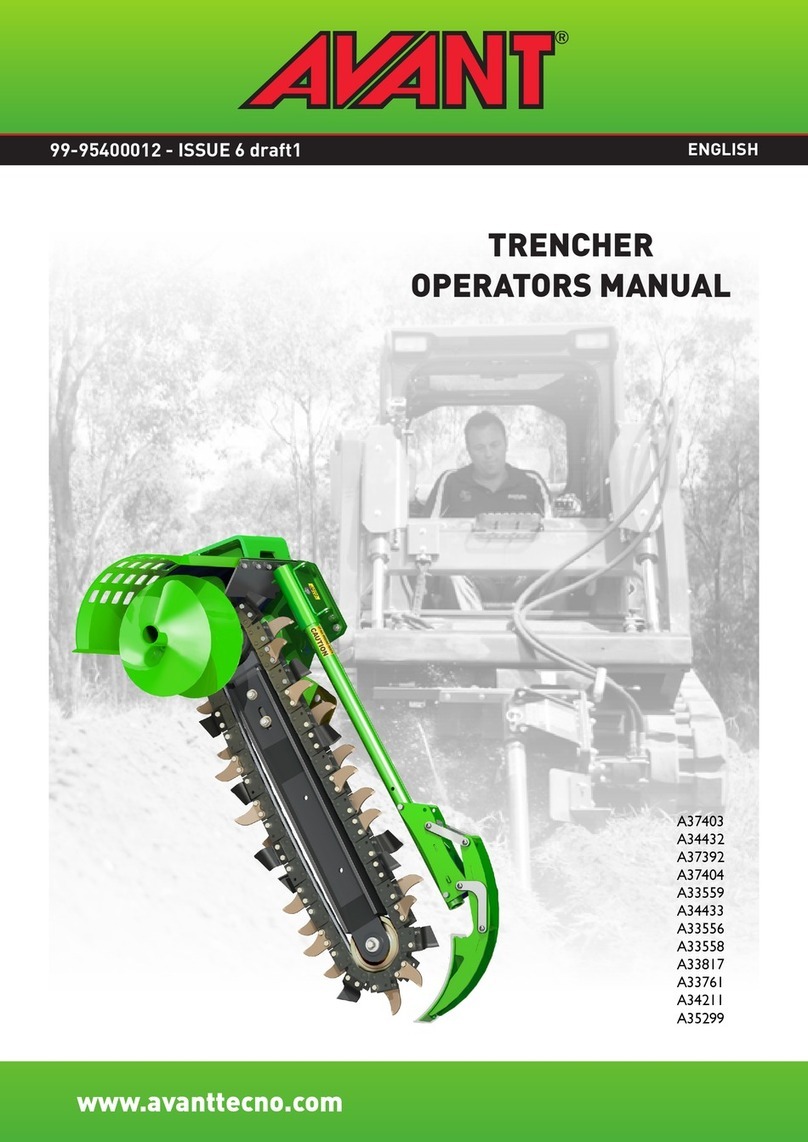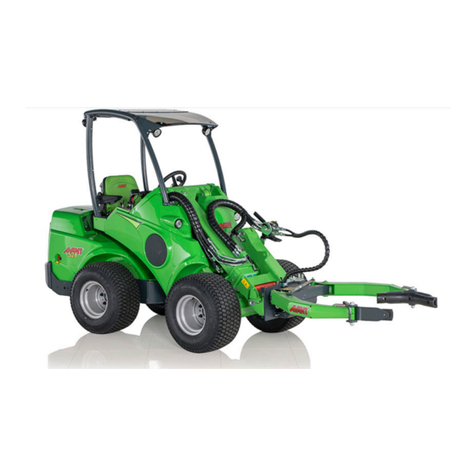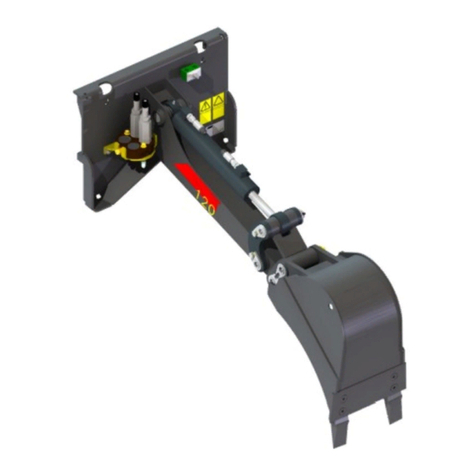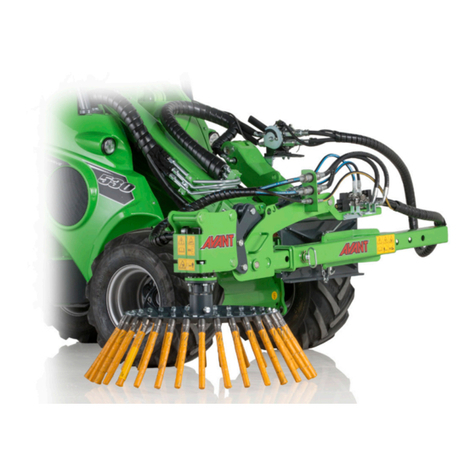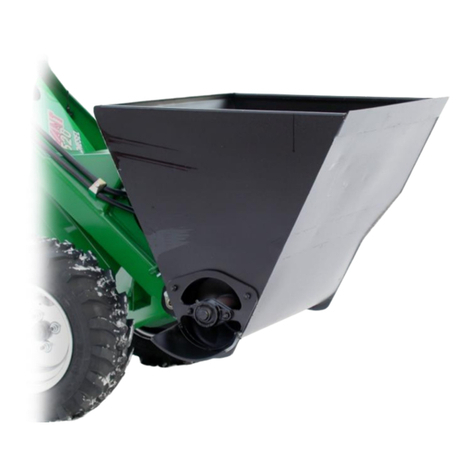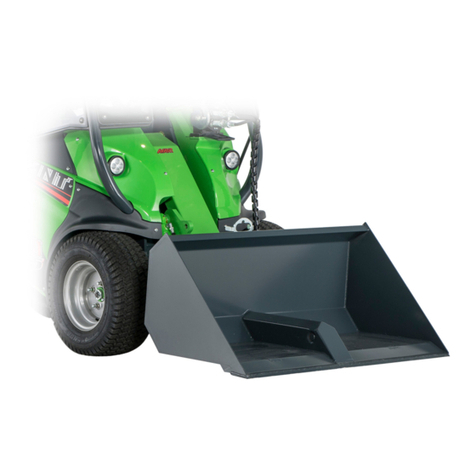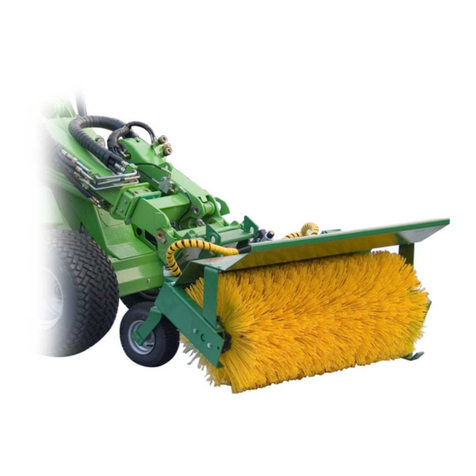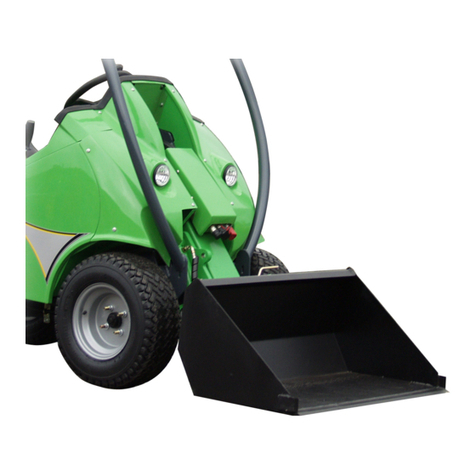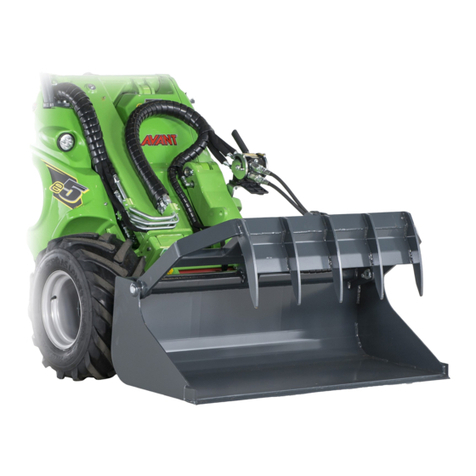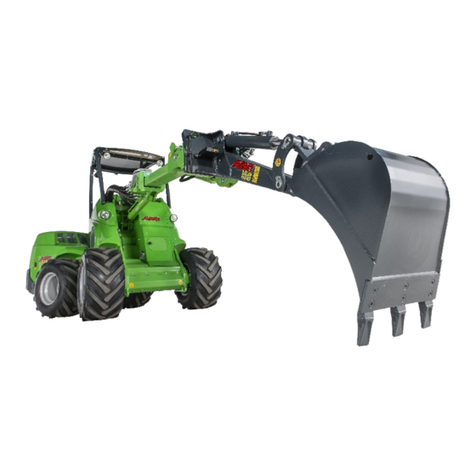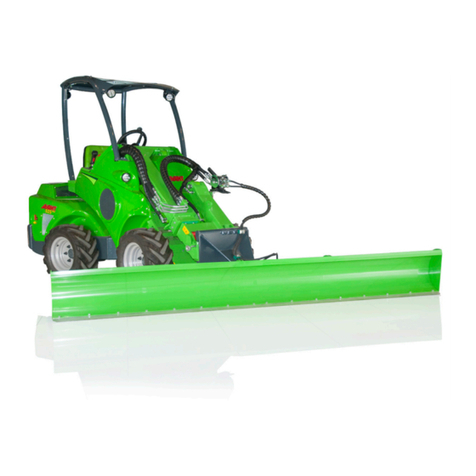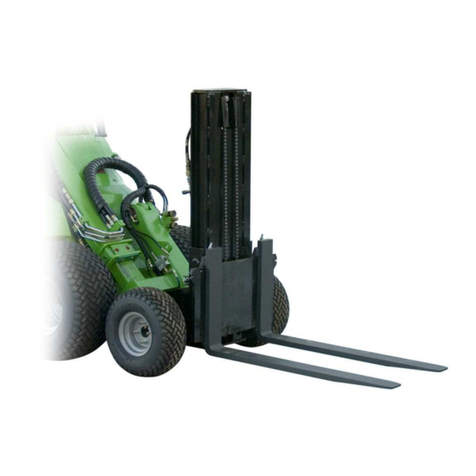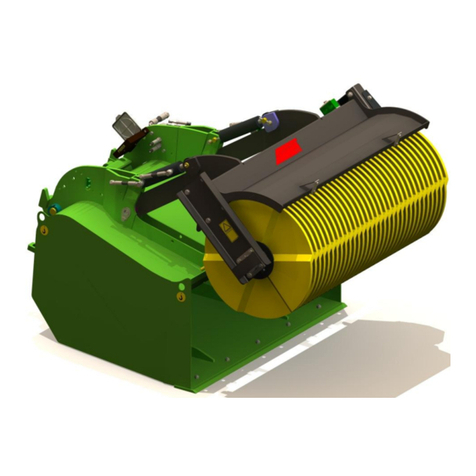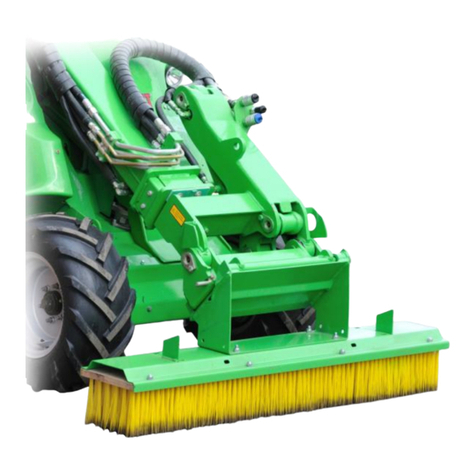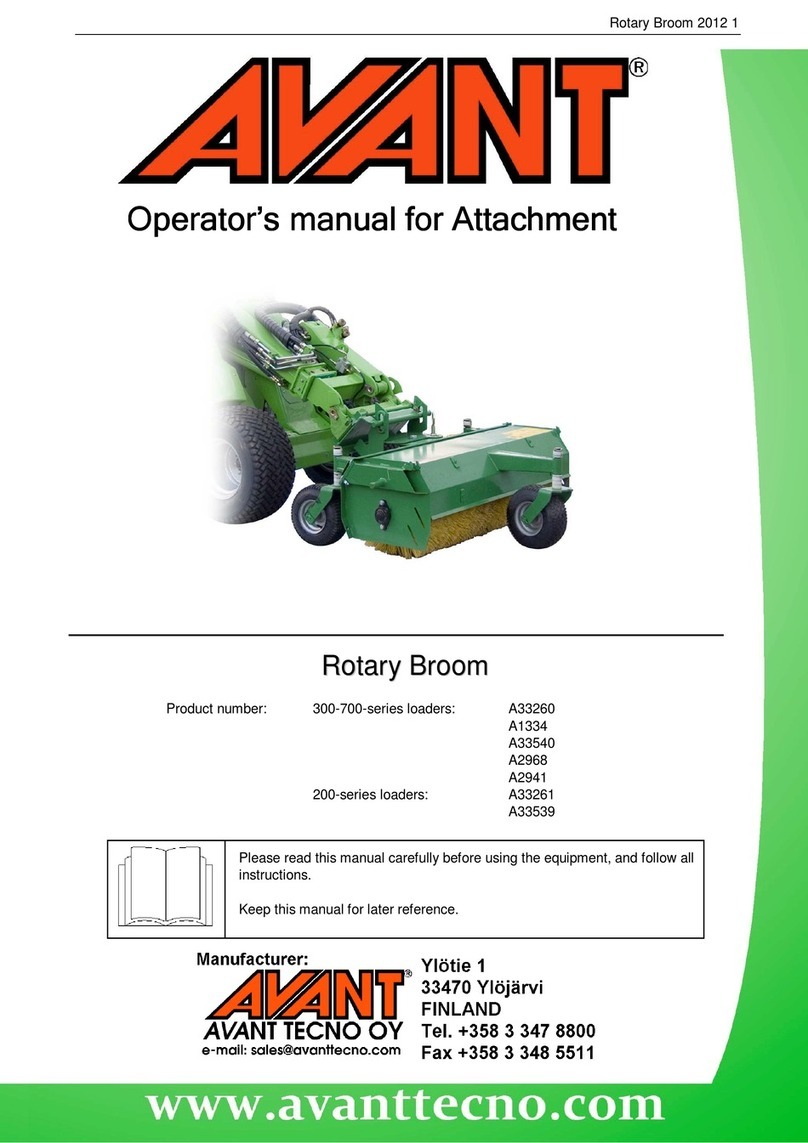
7 (32)
3. Safety instructions for using the attachment
Please bear in mind that safety is the result of several factors. The loader-attachment combination is highly
powerful and improper or careless use or maintenance may cause serious personal injury or property
damage. Due to this, all operators must carefully familiarise themselves about correct use and the operator's
manuals of both the loader and the attachment before starting operation. Do not use the attachment if you
have not completely familiarised yourself with its operation and the related hazards.
DANGER
Misuse, careless
use, or using an attachment that is in poor condition may
cause risk of serious injuries.
Familiarise yourself with the controls of the loader,
correct coupling procedure, and the correct way to operate the attachment at a safe
area. Study especially how t
o stop the equipment in a safe manner. Read all safety
precautions carefully.
Read all safety instructions carefully before handling the attachment
WARNING
When attaching an attachment to the loader, ensure that the locking pins of the
loader's quick
coupling plate are in the lower position and that they have
locked the attachment to the loader. Never lift or move an unlocked attachment.
Risk of dropping of an attachment -
Always make sure any attchment is
securely locked to the hydraulic side arm. Al
ways refer also to the operator's
manual of the separate attachment.
Risk of crushing, run-over and risks caused by attchment -
safe distance. The hydraulic side arm and any attachment coupled to it are designed
to be used by one operator
at a time. Do not let others near the danger area of the
equipment when it is in use. Check the minimum safe distance from the operator's
manual of the attachment.
Risk of tipping over - Keep boom telescope retracted except when operating an
attchment. Alw
ays transport the attachment as low as possible to keep the centre of
gravity low, and keep both the hydraulic side arm and the telescopic boom of the
loader completely retracted during driving. On slippery surfaces drive slowly and
deliberately. Operate t
he controls of the loader slowly and calmly especially on
inclined terrain.
Sudden movements can cause the loader to tip over - Operate the controls of
the loader in a slow and calm manner.
Be careful when lifting load to high level or
lifting load from
high. Avoid sudden changes in speed or direction to maintain
balance of the loader especially when handling heavy loads. Drive slowly and
carefully especially on inclined terrain or slippery surfaces.
Risk of tipping over - Keep the loader articulation in straight position when
handling heavy loads. When turning the articulation, the loader may tilt forward
Risks of collision, electric shock, and tipping over - Make sure that overhead
clearance is sufficient. Hitting an overhead obstacle may cause th
e loader to tip
over. Keep a safe distance from electric cables, lamps, or other electric systems;
hitting live parts may cause electric shock.
Risk of crushing under the attachment or the loader boom - Lower the
attachment firmly on the ground before leaving the driver’s seat.
Make sure that
the attachment is properly supported during any maintenance or inspections. Do not
leave the driver’s seat when the loader boom is lifted. Going under a raised
attachment or loader boom is dangerous, as the boom may
stability, mechanical fault, or if another person operates the controls of the loader.
